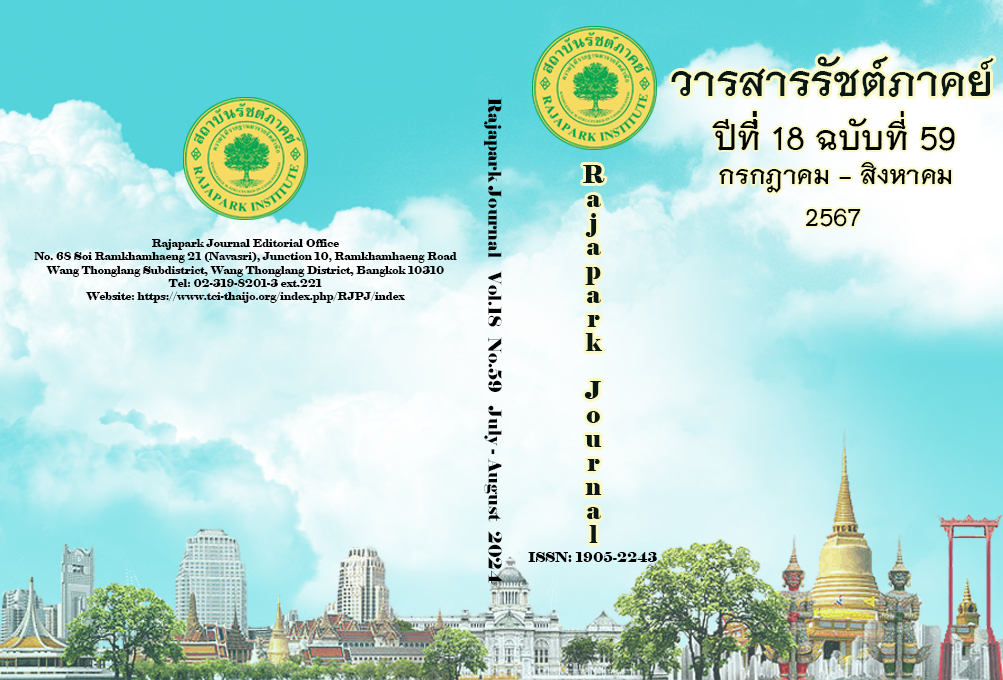Monarchy System in the Pre-Modern State Era
Main Article Content
Abstract
The state is the evolution that signifies the progress of human society in living under shared rules and regulations to achieve physical and spiritual goodness. Within the state, there is a system of governance, which is the relationship between the ruling authority and the ruled. Monarchy is a system of government in which a monarch, usually a king, is the head of state. It is one of the oldest forms of government in the world, having been used for thousands of years alongside the development of human civilization and society. The specific characteristics of monarchical systems can vary greatly depending on each society's cultural and political foundations. It has taken on various forms depending on each political society's underlying beliefs and characteristics. This article aims to analyze the characteristics of monarchical rule prior to the emergence of the modern state. The analysis shows that under the anarchic nature of interstate relations in ancient monarchical regimes, there was a lack of international laws and regulations. State borders were uncertain, centralization of power was inefficient, and the people lacked a shared national consciousness. The monarch was a sovereign with imperfect authority due to conflicts between states and the need for decentralization. The monarch's stability depended primarily on the loyalty of the nobility. Rulers utilized supernatural or divine concepts to reinforce the monarch's status, and succession was based on bloodline.
Article Details

This work is licensed under a Creative Commons Attribution-NonCommercial-NoDerivatives 4.0 International License.
Views and opinions appearing in the Journal it is the responsibility of the author of the article, and does not constitute the view and responsibility of the editorial team.
References
Carneiro, R. L. (1970). A Theory of the Origin of the State. Science, 169, 733–738. DOI: 10.1126/science.169.3947.733
Cederman, L. (1997). Emergent actors in world politics: How states and nations develop and dissolve. Princeton University.
Claessen, H. J. M., & Skalník, P. (1978). The early state: A structural approach. In The Early State (pp. 533-596). The Hague: Mouton.
Dull, J. (1990). The evolution of government in China, heritage of China: Contemporary perspectives on Chinese civilization. University of California.
Fabricius M., J. (2019). The monarch. The Oxford Handbook of Danish Politics.
Franks, B. (2013). Anarchism. The Oxford Handbook of Political Ideologies, Oxford University.
Grinin, L.E. (2008). Early state, developed state, mature state: The statehood evolutionary sequence. Social Evolution & History, 7(1), 67-81.
Kottak, C. P. (1991). Cultural anthropology. McGraw-Hill.
Locke, J. (1690). Two treatises of government (10th ed.). https://www.gutenberg.org/files/7370/7370-h/7370-h.htm
Mann, M. S. (1977). Ancient and modern. European Journal of Sociology/Archives Européennes de Sociologie, 18(2), 262-298.
Nuansakul, S., & Rojanaphand, K. (2012). Ancient and medieval political theory. Ramkhamhaeng University.
Sereerangsan, T. (2018). The cycle of 4 political regimes: monarchy. bureaucracy, plutocracy and democracy. Journal of King Prajadhipok's Institute, 16(1), 5-21.
Shaw, G. J. (2012). The pharaoh, life at court and on campaign. Thames and Hudson.
Spruyt, H. (2002). The origins, development, and possible decline of the modern state. Annual Review of Political Science, 5(1), 127–149. DOI: 10.1146/annurev.polisci.5.101501.145837
Thiravekin, L. (2007). The evolution of Thai politics and government (10th ed.). Thammasat University.
Tutunaru, M., & Morega, R. (2014). Social and economic premises on the rule of law. Procedia-Social and Behavioral Sciences, 149, 973-978. DOI:10.1016/j.sbspro.2014.08.319
Volk-Leonovich, S. (2023). Problems of the establishment of the ancient Russian state in the works by S.A. Korf. History of State and Law.
Wongsuwan, T. (2013). The concept of state and sovereignty. Fundamental Principles of Political Science. Sukhothai Thammathirat Open University.


